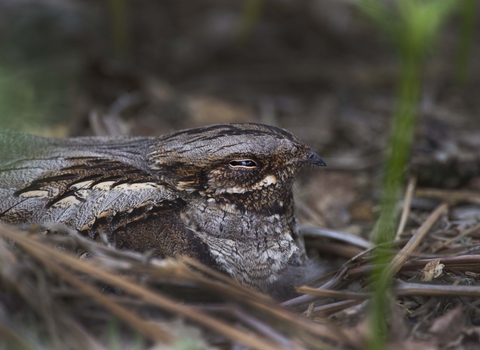
©David Tipling/2020VISION
Nightjar
The easiest way to find out if the nocturnal and well-camouflaged nightjar is about is to listen out for its distinctive 'churring' call at dusk. A summer visitor, it is most numerous in southern England.
Enw gwyddonol
Caprimulgus europaeusPryd i'w gweld
April to SeptemberSpecies information
Ystadegau
Length: 26-28cmWingspan: 60cm
Weight: 83g
Average lifespan: 4 years
Classified in the UK as Amber under the Birds of Conservation Concern 5: the Red List for Birds (2021). Priority Species under the UK Post-2010 Biodiversity Framework.
